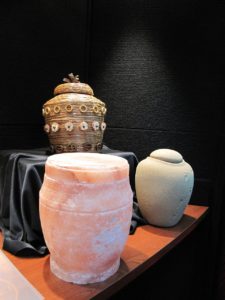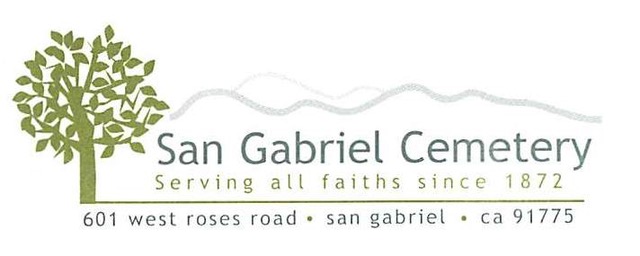Cremation Costs in California: Know These To Cut Costs

An unexpected death in the family may cost more than what you can afford and what is practical. How will cremation cost you less? What are the options and how does cost add up?
According to a report by CNN, in 2016, about half of Americans prefer cremation to burial for its lower cost and convenience.
If you are reading this, then you must be considering going with cremation, which is becoming increasingly popular. But if you’re not yet decided, read on to make informed choices.
How much does cremation cost?
There is no single, direct answer to this question, but knowing the process can help in determining the underlying factors that contribute to the total cost.
Cremation is the process of subjecting a corpse to a temperature high enough to disintegrate organic matter. The bones turn to ashes called cremains.
Initially, the body is prepared by removing any foreign object that cannot be cremated, such as pacemakers, implants, or jewelry.
Once done, the body is placed in a cremation casket (or alternative casket) and then slid into a cremation chamber heated to roughly 2,000 degrees Fahrenheit for about two hours.
A cooling period of about half an hour follows. At this point, only bone fragments remain, which are further ground into ashes. The ashes are then collected, placed in an urn, and handed over to the family.
As this process is relatively quick and simple, cremation services may cost just a few hundred to a couple of thousand dollars—roughly equivalent to the cost of the casket alone in a traditional burial.
Water Cremation

There is also another method called water cremation. In this method, alkaline hydrolysis dissolves the body except the bones.
The solution of water and potassium hydroxide is heated to reduce the body to bone fragments.
This method is more expensive—reaching the $2,000 to $3,000 range—due to the high cost of the chamber. But if you want to have less carbon footprint, this is the way to go.
Why cremate?
Aside from cost, people are now choosing cremation for reasons such as the following:
- Practical and easy
Having a traditional burial means that family needs to travel to a specific place for funeral services and burial. Cremation can skip viewing services, making it more flexible, especially for families abroad. - Can be personalized
There are no hard rules in how a family pays tribute or handles ashes. In contrast, traditional burial requires services held at licensed venues. - More cost effective
Cremation often avoids many of the expensive items involved in traditional burials.
See the breakdown below of the different costs that will add up to the total expense—whether cremation or traditional burial:

Decide whether to hold a memorial service or not
Cremation offers flexibility in how a deceased loved one is remembered. There are no strict rules on memorials or services. Direct cremation (without service) can cost less than $1,000.
Direct cremation typically covers: body collection, transfer, preparation, death certificate processing, and essential paperwork.
Some families still hold services for cultural or religious reasons. Knowing your intent helps manage costs accordingly.
Timing of the cremation matters
Some families hold services before cremation; others afterward. Cremating first can eliminate embalming needs, saving $200–$800. Embalming delays decomposition by replacing blood with chemicals.
Quick family decisions can save money—communicate with your funeral home early. Styling, dressing, and makeup may cost under $500.
Caskets significantly affect burial costs. Basic models cost a few hundred dollars; ornate ones can reach $20,000. Cremation caskets are often wood/cardboard or rented for viewing.
Some families choose to witness the cremation itself—note that this may add charges.
Decide on who can visit

Private or public viewings are at the family’s discretion. Facilities often charge for use, adding to total expenses. Private events cost less than wakes with reception and catering, which are pricier.
Some states prohibit receptions on funeral grounds. Always check applicable local regulations.
Cremation costs vary across funeral homes
Prices vary despite regulation under the Federal Trade Commission’s Funeral Rule.
Ask for a general price list and itemized quote. Verify whether crematory services are handled in-house. Transfers may add costs. Get a quote for direct cremation first, and compare bundled vs. itemized services.
You can also contact crematoriums directly to see if they offer paperwork services like death certificate processing. Some funeral homes offer financing—review terms carefully to get the best deal.
Consider the Final Resting Place
Urns and Keepsakes

After the cremation, ashes are typically placed in a temporary urn—suitable if you plan to scatter them later.
The family may choose a permanent urn, with prices ranging from $50 to $1,000 depending on material and design. Urns can be kept at home, placed in a mausoleum, or housed in a cremation niche.
Some individuals prefer to carry a portion of the ashes, while others divide them among family members or turn them into keepsakes or jewelry.
Burying
Burying an urn in a cemetery typically requires a smaller, more affordable plot. Headstones or markers are optional.
Alternatively, families can legally bury ashes on private property. Biodegradable urns are available—including tree urns—for those seeking an environmentally friendly option.
Scattering

Scattering ashes at sea requires travel by boat or plane to a location at least three nautical miles from shore, as mandated by the Environmental Protection Agency (EPA).
The scattering itself is free, but travel costs should be considered. The EPA prohibits scattering pet cremains or non-biodegradable items in the ocean. For lakes and rivers, check your state’s rules.
Some families choose meaningful locations—like a favorite national park—with appropriate permissions from park officials.
The Takeaway
Death is inevitable, often unexpected. While we can’t emotionally prepare, we can plan financially.
Planning ahead—whether for yourself or a loved one—can ease both logistical and financial burdens. Whether you choose cremation services or a traditional burial, understanding the cost factors can help ensure your decisions are both respectful and economically sound.
